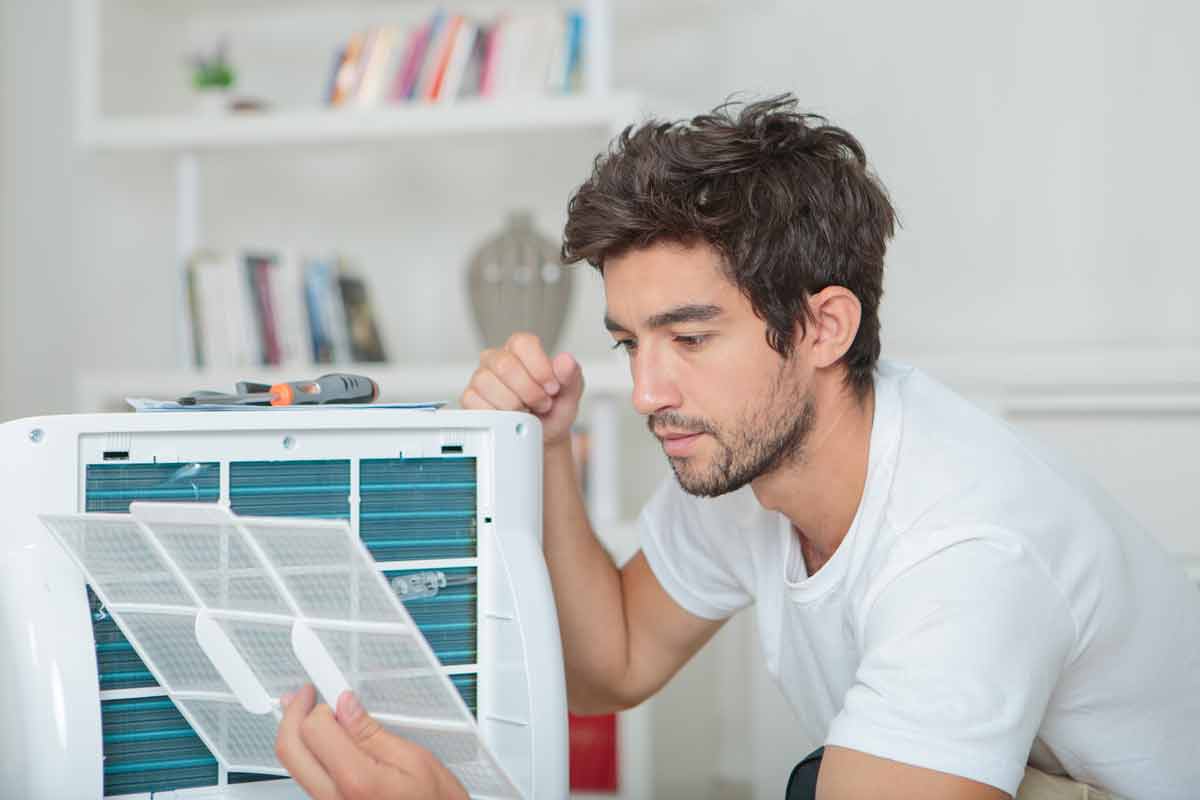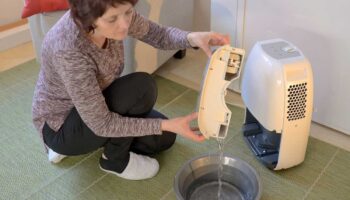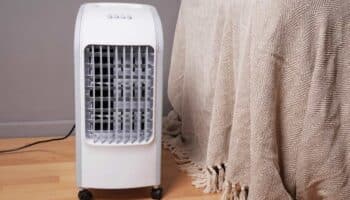Appliances and electronics of any kind are great and helpful—usually. When they’re not working, they’re just frustrating.
Like a portable air conditioner that won’t turn on. Now that thing that’s supposed to make your air cool and breathable is nothing more than a giant doorstop. And likely a giant pain you know where, too!
But all is not lost.
While there are several reasons for an air conditioner of any type not to turn on, like your portable AC may not be starting because of power issues—some of them aren’t that obvious. Dirty air filters, a clogged drain pan, dirty or iced-over coils, and problems with the refrigerant lines.
The good news is that you can fix most of those problems by yourself. So keep reading, because I’m going to tell you how.
What You’ll Need
Depending on what’s stopping your air conditioner from turning on, you may need one or more of the following tools or replacements.
- Replacement power cord
- Soft cloth or brush
- Water and mild detergent
- Coil cleaner
- Replacement electrical cord
- Replacement air filter
We’re going to start with the most obvious. And don’t worry if you want to smack your forehead and say, “Duh,” when you realize what the problem was. We’ve all been there!
When your portable AC won’t turn on, check the following.
#1 Check for Power Supply Issues
The very first thing you want to check if your portable air conditioner won’t turn on is your power supply. There are a few things to consider.
Step 1
Check your power outlet. Is your AC plugged into one that’s working properly? The best way to test is with another small device or appliance. Does it work? Alternatively, you can move your air conditioner to another outlet, and test it there.
Step 2
Inspect your power cord for any signs of damage. If you notice frayed wires or exposed insulation, replace the cord immediately. Your owner’s manual may provide specifications for a replacement cord, as it’s crucial to use one that’s compatible with your unit.
Step 3
Take a look at your circuit breaker or fuse box to see if the breaker has tripped or a fuse has blown. If so, reset the breaker or replace the fuse. If you’ve overloaded the circuit, you may have to move other devices to a different one.
Note that the circuit could be overloaded by the air conditioner itself if it is a high-wattage unit. In that case, your portable air conditioner should not be using that outlet at all.
#2 Temperature Settings and Controls Configuration
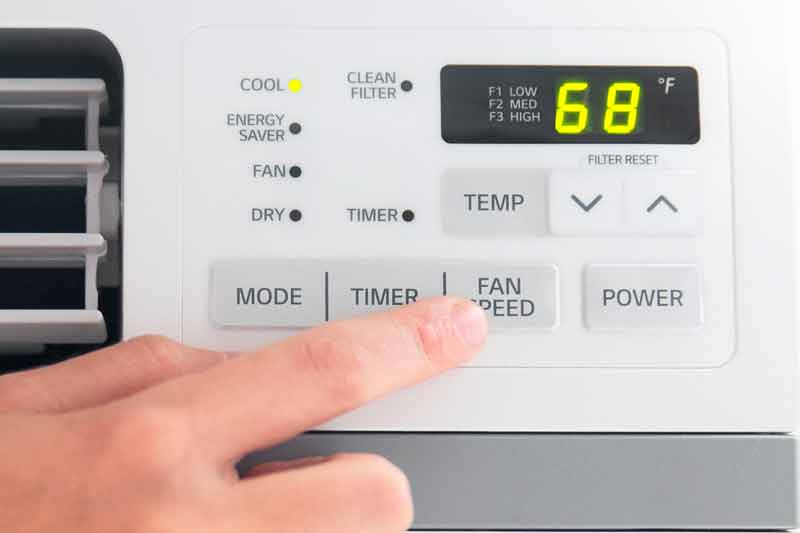
If any of your temperature settings are misconfigured or if you have faulty controls this can prevent your portable air conditioner from turning on, consider the following:
Step 1
Take a look at your temperature setting and make sure you have it set to something that’s below your current room temperature. If the thermostat is set at a higher temperature, the air conditioner won’t turn on. So adjust your settings and try again.
Step 2
If your unit came with a remote control, check to see if the batteries are functioning correctly. Replace them if necessary. Additionally, verify that there are no obstructions between the remote control and your air conditioning unit, as this may interfere with the IR signal.
Step 3
Inspect your air conditioner control panel for any physical damage or any signs of malfunction. If you have any buttons that are unresponsive or the panel is displaying error codes, take a look at your user’s manual for any troubleshooting steps.
Note that in some cases, you may need a professional technician to repair or replace the control panel.
#3 Water Drainage Issues
As it cools your air, your portable air conditioner extracts moisture from it. However, it’s also necessary that the unit be able to drain away the condensation that collects. If it isn’t turning on, it may be due to a drainage problem.
Step 1
Check your condensate tank, which is located at the bottom of the unit, and ensure that it’s not full. If it is, empty the tank and then reinstall it. Some models have a safety switch that will prevent the air conditioner from turning on if the tank is full.
Step 2
Not all portable air conditioners have a drainage hose, but if yours does, examine it for blockages or kinks in the line. Also, ensure that the hose is securely connected and has a suitable drainage point.
If the hose is blocked by sediment, flush it until it runs clear. And if it’s twisted are kinked, either straighten it out or purchase a new hose.
#4 Dirty Condenser Coils
How long has it been since you gave your air conditioner a good cleaning? A build-up of dirt on the condenser coils could stop it from turning on.
Step 1
Unplug your air conditioner, open it up, and locate the condenser coil.
Step 2
Use a soft cloth or brush to wipe off most of the dirt and then use warm water and mild detergent to clean them off. Alternatively, you can buy a can of coil cleaner.
#5 Overheating and Safety Features
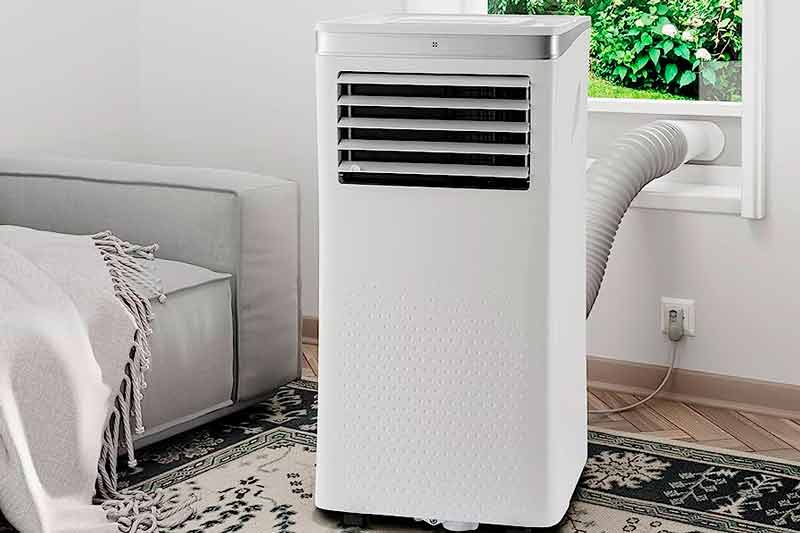
In order to prevent damage and ensure safety, portable air conditioners have a built-in overheating protection mechanism. If your unit ever overheats, it may not turn back on until it cools down. If that happens, check the following.
Step 1
Make sure your unit has sufficient airflow since restricted airflow can cause it to overheat. Your owner’s manual should tell you how far away from walls or furniture it should be placed, so follow those guidelines.
Step 2
Check your vent openings and filters for accumulated dirt and debris. Clean or replace the filter if necessary, and make sure to keep the air conditioner vents clean as well.
Step 3
If your air conditioner has timer and or delay settings make sure it’s not programmed to turn on at a later time. Check your settings and disable any unnecessary delay options.
#6 Frozen Coils
If your evaporator coils freeze over, there’s a good chance your AC won’t turn on.
Freeze ups are typically caused by low freon, low airflow, and sometimes from extended use when set at very low temperatures.
Low temperatures can cause the condensation that naturally forms on the coils to freeze if the unit isn’t draining properly.
Step 1
Turn off your unit and open it. if you see a build-up of ice on your evaporator coil—or anywhere inside—leave it off for several hours, letting it completely defrost.
Step 2
Wipe off the coils with a soft cloth and allow them to dry completely.
Step 3
Check that the unit is draining properly, following the steps above in #3, the Water Drainage Issues section.
Conclusion
It can be frustrating when your portable air conditioner won’t turn on, especially when you need it the most. However, if you follow the troubleshooting steps above it should help you to identify some of the most common problems.
To recap:
- Check for power supply issues
- Take a look at your temperature settings and controls configuration
- Look for water damage issues
- Check to see if your condenser coil is dirty
- Determine if overheating or safety issues are the cause
- Look for frozen coils
Hopefully, one of those will be the culprit, and you’ll be able to get your air conditioner up and running again. If not, you may need to contact a technician.
While you’re here, why not check out our related posts below? Perhaps we can help you with something else.
